Clem Booth makes an exciting rod offer for charity
Says Clem:
I would like to auction an immaculate Sage 0 weight rod, the iconic SPL model, together with a matching Sage reel and Sage 0 weight line. I will get the outfit to the successful bidder. All proceeds will go to the Children's Hospital Trust (CHT), the fundraising arm of the Red Cross War Memorial Hospital. The outfit cost around $800 plus, so I hope for a good bid. It is a beautiful piece of kit and I wouldn't give it up easily, but for the CHT it would be an admirable reason.
I will keep the bidding open until midnight on the of February and announce the successful in my next newsletter.
Fishing
The past while I have got no fly fishing done on two accounts. Firstly, the Western Cape is in the grip of drought; as it happens the worst drought in 100 years. The second is that I've had a spell of backache and just the thought of slinging a fly vest onto my shoulders would have been a daunting prospect. Instead, I have done a lot more reading on the subject than I otherwise might have, and some of it has been very useful and entertaining.
Click in images to enlarge them
Arthur Cove
A case in point was my reread of Arthur Cove’s book, My Way With Trout. You will likely remember him as one of the most celebrated stillwater fly fishers in the UK. Certainly he was a specialist at nymphing lakes and an angler well ahead of his time.

Arthur Cove's PTN (Image from the Sussex Fly Dresser's Guild)
In his book, Cove describes his version of the PTN, tied along the lines of Frank Sawyer’s PTN, but with no tail and with a thorax of dubbed hare fur under the pheasant tail wing case. Many UK anglers believe this pattern is one of the most successful stillwater nymphs of all time, certainly on lakes like Grafham and Rutland. Cove tied them from as big as size 8 (believe it or not), and down to size 12.
What interested me as much as Cove's large PTNs, was his categorical statement that a team of flies will outperform a single fly in stillwaters under most circumstances. He mainly used three flies and says he hardly ever lost a fish because the second or third fly snagged in weed. He also maintains that he had less tangles than when fishing a single fly! The only risk he mentions, is a trout taking one of the dropper flies when you're busy playing a fish, but he says that only happened to him on very rare occasions.
As for Chironomid or midge pupa patterns, he preferred imitating them with North Country-type Spider variants over conventional buzzer patterns. He tied them on standard hooks with silk bodies in a variety of colours and hackled them with two or three turns of hen or cock hackle.
But in my view, the most interesting revelation was his description of his Red Diddy fly. He developed the pattern to imitate bloodworms and all it comprised was a red rubber band tied to the top of a hook shank with red thread. But the secret was to shave away a small section of the rubber nearest the hook shank to create movement in the rubber through a hinging effect. The fly was so successful that after a season of huge catches on many different lakes, he stopped using the pattern because it was too effective! But to qualify this, you have to understand that back then public stillwaters in the UK had a daily bag limit with no option of catch release, so when you got your limit, usually six fish, you had to head off home!
Fly line for sale
Ryan Bradfield offers a new Rio Trout LT DT-1-F fly line for R 550 including postage. You can contact him if you are interested at This email address is being protected from spambots. You need JavaScript enabled to view it.">This email address is being protected from spambots. You need JavaScript enabled to view it.

Rio Trout LT DT-1-F fly line
Tying with CDC
For readers interested in fly tying, you can watch Agostino Roncallo tying with CDC on the following link: https://www.youtube.com/watch?v=BDhk8bcAJXo
Among other patterns, he demostrates the tying of his much celebrated Mirage, a realistic imitation of an adult mayfly. I thought the quality of the photography was excellent.
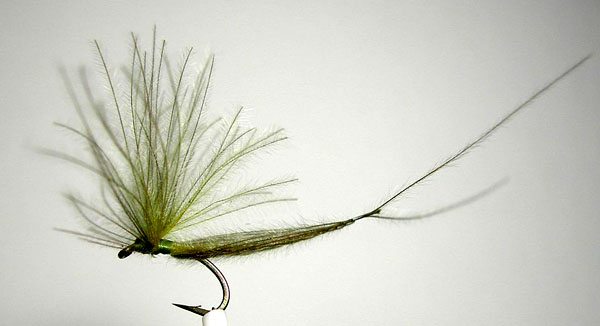
A Mirage dry fly tied by Agostino
Fly fishing in Afganistan – Photos per Lawrence Bartlett
South African journalist Lawrence Bartlett has published on Kindle a memoir of his quest for trout in the mountain streams of Afghanistan at the height of the war waged against the Taliban by the US and its NATO allies. Armed only with a lifelong love of fishing and a belief that Italian explorer Marco Polo encountered trout in his travels through Afghanistan centuries earlier, the former Kabul bureau chief for the international news agency AFP, packed his fly-rod and went fishing for trout whenever he got the chance. His search took him from the Panjshir valley in the foothills of the Hindu Kush, to Bamiyan, and ended in him landing a brown and some rainbow trout.
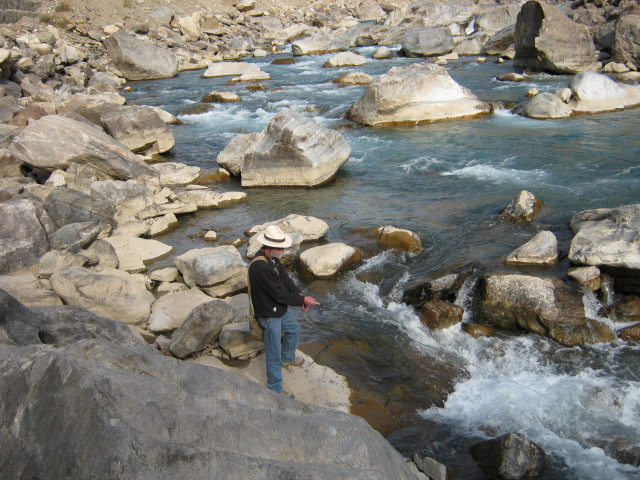
Lawrence fishing a river in Afganistan

A catch that lifted his spirits!
George Orwell wrote in Coming up for Air that 'Fishing is the opposite of war'. Lawrence says he likes the phrase 'but it seemed to me,' he says, 'that there were similarities between the suddenness of a strike from a fish and an explosion on a quiet day in the office. Fly Fishing in Afghanistan, a short, illustrated, memoir, is available through Amazon's online ebook store for Kindle readers, or on ordinary computers through a free Kindle app. It is priced at $1.99, but Amazon's prices vary from country to country.

Fly Fishing In Afganistan
Born in Pietermaritzburg, Lawrence has worked as a journalist abroad for more than 40 years in Europe, Africa and Asia, and recently returned to live in Cape Town. I hope to have a full excerpt of his fly fishing escapes in Afganistan posted on my website soon.
Quiz of the month
1. What types of flies were the American fly tiers Polly Rossborough and Sylvetser Nemes, respectively known for?
2. Described as a child prodigy, American angler Ernest Schwiebert was the celebrated author of Trout, a two volume, 1745 page publication. It is still one of the greatest research works ever in fly fishing and serves as my encyclopaedia on many aspects of the sport, including its history. What was Schwiebert’s profession?
3. If two trout are a brace, how many are trout there in a leash?
4. Who wrote A River Never Sleeps and Silver: The Life of an Atlantic Salmon?
5. What do Tom Ivens, Brian Clarke and Dean Riphagen have in common?
Answers at the end of the Newsletter
Not all doom and gloom…
Shortly before New Year, I had a welcome call from my good friend Fred Steynberg. We exchanged Season's greetings and naturally spoke about the weather, or more pertinently, about the lack of rain and the searing heat in our respective parts of the country. Fred is lucky enough to live in Rhodes in the Eastern Cape Highlands, and guides in the district. He also guides in Lesotho – in fact, he was just about to head off there on a fishing trip – and in many saltwater venues off the African coast.

Fred Steynberg.
What he had to tell me about local conditions I found most interesting.
Firstly, he confirmed that the situation was presently pretty cheerless, but that despite the conditions, two large trout had recently been taken on fly tackle, one of 22 and one of 24 inches, both from lower beats of the Bokspruit River. As I recall, Knockwarren was one of those beats. I found that encouraging news.
Fred is a remarkable naturalist and told me that he’d noticed a great number of yellowfish had wintered over last year, not moving off downstream to warmer water as they usually do. Surely that has to relate to the dry weather and poor water flows.
He also spoke at length about the remarkable capacity of trout to survive the most hostile conditions and still appear, as if by magic, when the rivers return to normal.
As always, it was a delight to talk to him.
See Fred's website at http://www.linecasters.co.za

Fishing the Knockwarren beat on the Bokspruit. Photograph Phil Hills.
Just after that call, my phone rang again and it was another good friend, this time Basie Vosloo, who owns the farm Birkhall not 40 kilometres from Rhodes. There's a lovely, long section of the Sterkspruit River on Birkhall, but it had run bone dry over the last couple of weeks. The purpose of his call on the 27th of December, though, was to tell me that he was sitting the veranda at Birkhall watching a heavy storm, the first rain in weeks!
A storm taken from the veranda on Birkhall in May, 2011. Tom Sutcliffe photograph.
More cheerful news
Then early this week, Dale Harrison, an ophthalmic surgeon and fly fisher living in Cape Town who does my annual eye checks, sent me a message to say he'd just spent a week in Rhodes and found the Bokspruit flowing well and that he'd got a few decent yellowfish on the Clontarf beat.
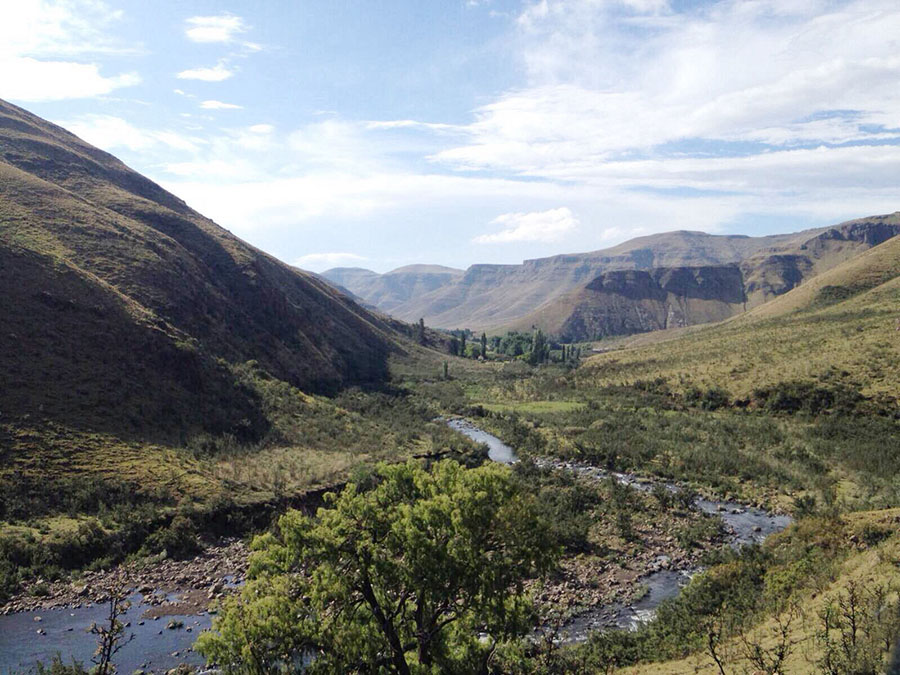
The Bokspruit River. Photograph per Dale Harrison.
...followed by more cheerful news from Basie Vosloo...
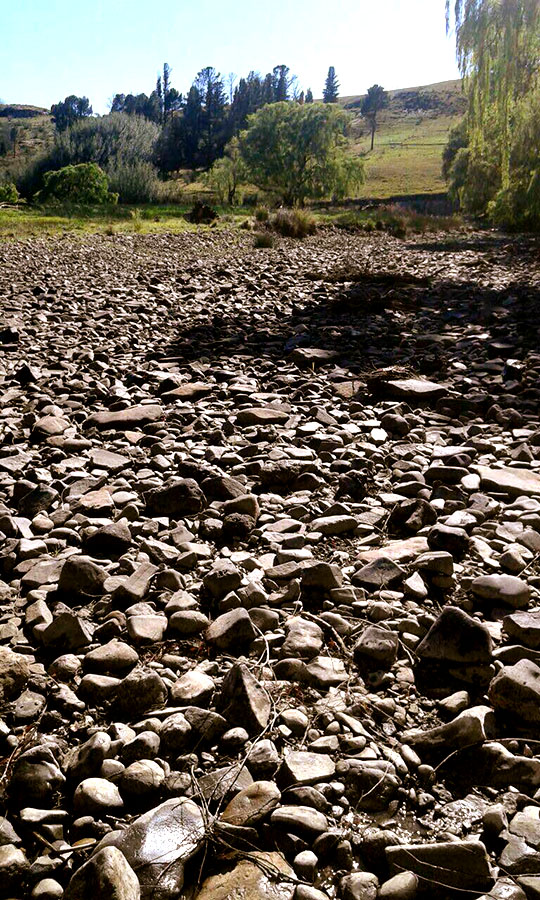
The Sterkspruit River at 8.45 am on 12 January 2016
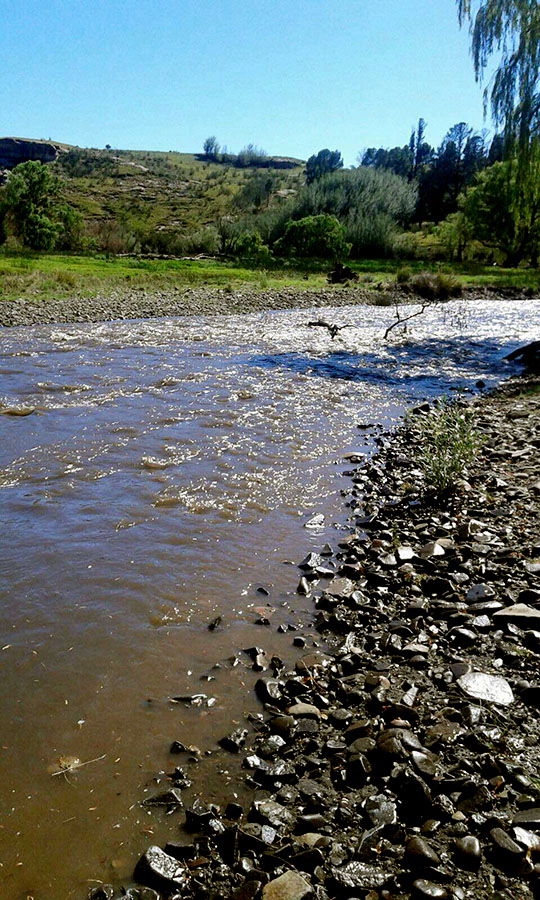
The Sterkspruit River at 9.45 am on 12 January 2016, just one hour later!
Photographs per kind favour of Basie Vosloo.
Quote of the month
‘…because of all the television commercials, cocktail parties and assorted social posturing I thus escape…’
Robert Traver on why he fishes. Excerpt taken from Traver’s Testament of a Fisherman.
‘The midges, in their various sizes and colours, are the single most important group of creatures with which we have to deal. In the first place, they meet our requirements of long-term availability throughout the season, because they are present from the first day to the last; and secondly, they are eaten in mind-boggling, stomach-fattening numbers by trout.’
Brian Clarke, The Pursuit of Stillwater Trout.
Images of the month
We have spoken a lot in these pages recently of the Sterkspruit River and of the Eastern Cape Highlands so I have chosen a few images that I have taken over time in this area to end off this newsletter.

A beat on the Sterkspruit in better conditions.

Evening light on a Sterkspruit catch.

The Sterkspruit at sunset.
Answers to quiz
1. Polly Rosborough was known for fuzzy nymphs and Sylvester Nemes for soft- hackle flies.
2. Architect.
3. Three.
4. Roderick Haig-Brown.
5. All three wrote defining books on stillwater fly fishing. Tom Ivens: Still Water Fly Fishing (1952), Brian Clarke: The Pursuit of Stillwater Trout (1975), Dean Riphagen: Stillwater Trout in South Africa.
Tom Sutcliffe



